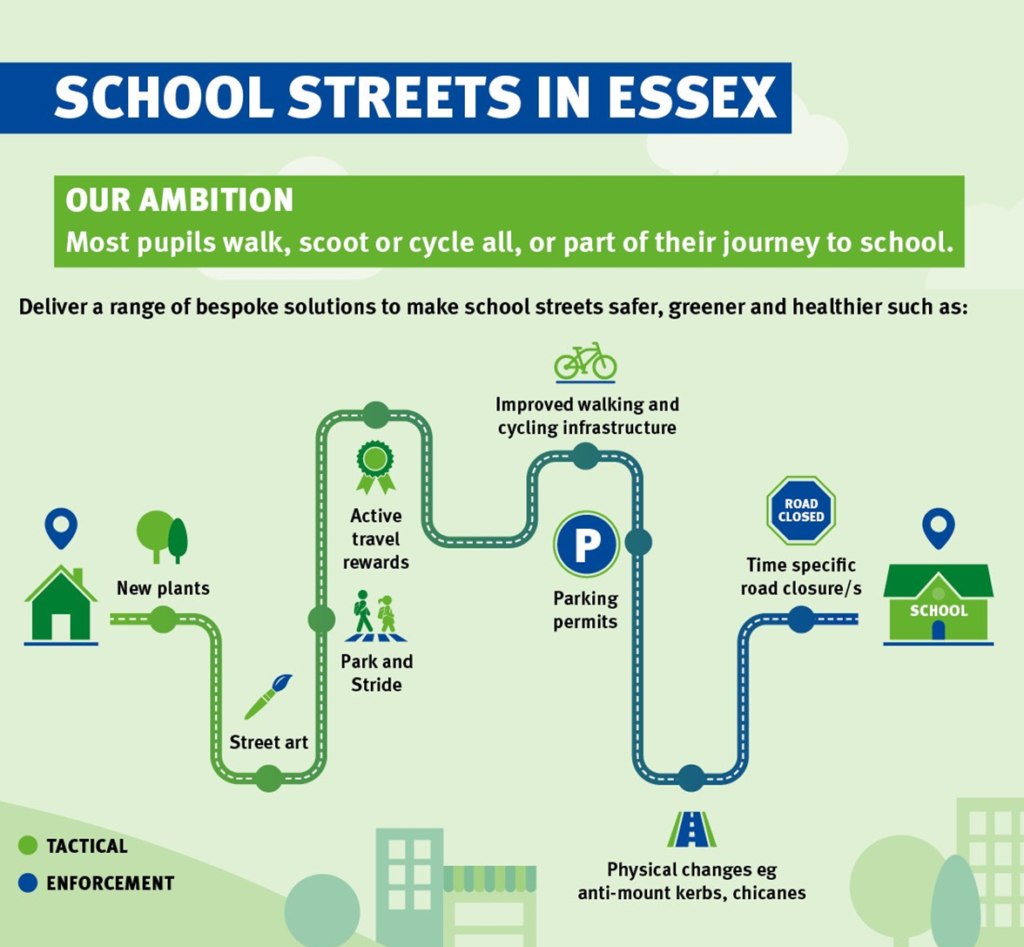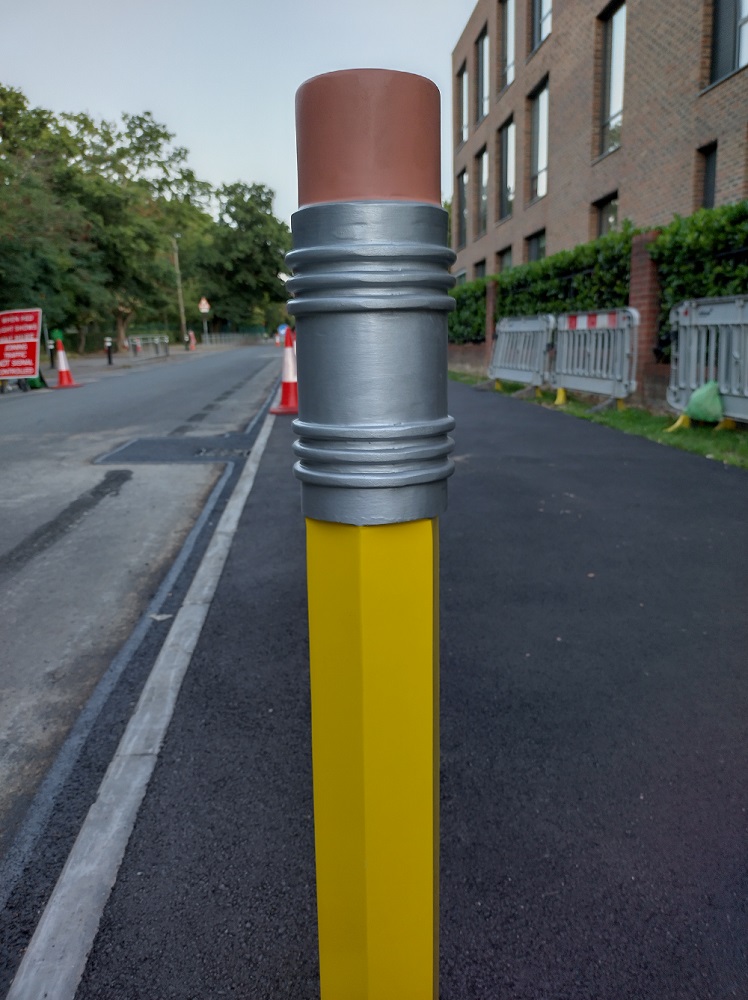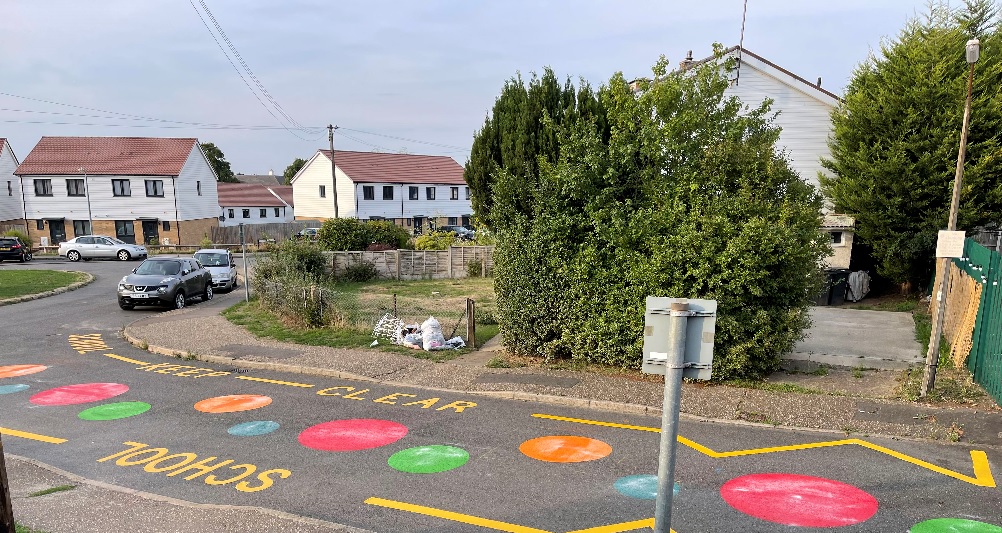Context to the Guidance
Typically Healthy School Streets (HSS) are streets that are reserved for walkers, cyclists, and micro-mobility (e.g., scooters) during the start and end of the school day.
HSS are typically implemented at schools with a main school entrance, to make it easier for families to travel safely to and from school. Often, vehicles are not allowed to enter HSS’s at certain hours, with exceptions for residents and emergency services.
HSS make it safer for children and families/carers to walk, cycle or wheel to school, which increases active travel, reduces traffic and illegal parking, improves children’s health which all result in less air pollution around schools, quieter neighbourhoods and increased perceived and real road safety.
Essex County Council Approach
Essex County Council are currently developing a Healthy School Streets Strategy and an associated Highways Practice Note (HPN), which will provide the recommended approach for designing and implementing Healthy School Streets in Essex. The Strategy and HPN is due for publication in 2024.
The proposed approach is outlined in the diagram below.

Best Practice Guidance
Best Practice Guidance specific for Essex is not yet available, and is due for publication in 2024. Once available, this page will be updated with the best practice guidance for the delivery of Healthy School Streets in Essex, as set out in the the Essex Healthy School Streets Strategy and associated HPN.
In advance of formal Essex best practice guidance, opportunities should be sought to trial the implementation of Healthy School Street measures across Essex. Any measures should be consulted on prior to implementation on a trial basis and monitored to assess the impact on the number of cars driving to schools and the impact on levels of cycling and walking. Successful schemes have the potential to become permanent subject to further consultation.
Current Essex Examples:
We are already starting to deliver schemes and initiatives across the county that seek to improve the road safety and congestion on a School Street, taking a phased approach that is tailored to suit the needs of the specific issues of the local community.
So far this has ranged from behavioural change measures (such as street art to ’20s Plenty’ signage) to change the look and the feel of the area, and to encourage drivers to slow down and be mindful that they are on a School Street.
Sawyers Hall Lane in Brentwood and Gilchrist Way and Lancaster Way in Braintree have been improved as part of ECC’s Healthy School Streets programme. Both locations have suffered from high levels of congestion at school pick up and drop off times, an issue also impacting surrounding roads.
The work has taken place following engagement with families in the area, such as the Active Travel Fund 2 consultation held in 2021 and children and parent workshops and drop-in sessions.
At Sawyers Hall Lane in Brentwood the pavement has been permanently widened to allow more space. New “pencil” bollards have been installed to deter pavement parking, 20mph signs have been put up and road lining including refreshing the double yellow lines and nearby zebra crossing.

The pavement on Lancaster Way in Braintree has been resurfaced to make active travel easier. Road markings have been refreshed and temporary street art painted on the road, as well as on Gilchrist Way, to change the look and feel of the street. ‘20mph is plenty’ signs and thermoplastic ‘Children Crossing Warning’ road signs have also been installed.

Other examples elsewhere include:
Lambeth, London:
(Example below showing signage used to indicate the use of school streets)
Entrance to Jessop Primary School, Lambeth shows formal and informal signage, providing information about the School Street
Signage used in Edinburgh for School Streets:
The signage can also be temporary and operated by volunteers on behalf of the schools. For example, in Hackney, the signs fold to become blank when the zone is not in operation, to try and reduce confusion when they are not in use, i.e. during the school holidays.
ECC Recommendations:
Opportunities should be sought to trial the implementation of temporary Healthy School Street measures across Essex.
Any measures should be consulted on prior to implementation on a trial basis and monitored to assess the impact on the number of cars driving to schools and the impact on levels of cycling and walking.
Successful schemes have the potential to become permanent subject to further consultation.
How the Standard should be applied:
The concept of School Streets is supported under the Road Traffic Regulation Act 1984 (s1 and s6-9) and in the government’s Gear Change: A bold vision for cycling and walking document, as an option to regulate traffic and restrict access:
- to avoid danger to persons or other traffic using the road,
- to facilitate the passage on the road of any class of traffic (including pedestrians),
- to prevent the use of a road by vehicular traffic where such use is inappropriate given the street context.
Further information can be found at: http://schoolstreets.org.uk/how/
